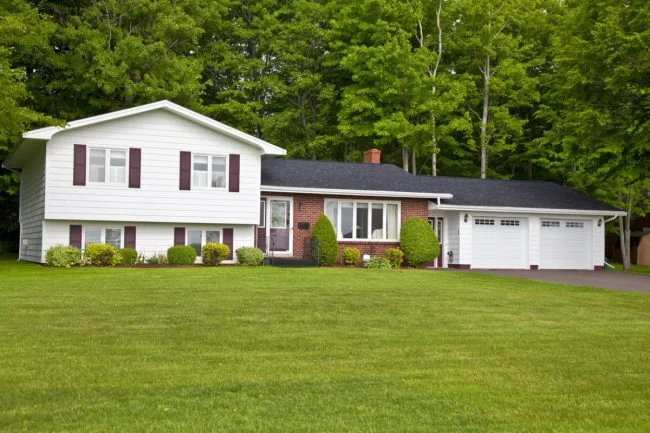Embracing the architectural charm of split level homes offers a distinctive living experience that goes beyond the conventional. Originating in the 1950s and peaking in the late ’60s, split levels are making a comeback, with a fresh perspective on their advantages and challenges. Let’s explore the allure of these three-staggered-floor abodes, uncovering what makes them a unique choice for homebuyers.

Maximizing Space with Minimal Footprint:
After World War II, the Baby Boom prompted a demand for larger homes with three bedrooms. However, limited lot sizes inspired the ingenious design of split level homes. By staggering floors, these homes provided extra living space vertically without encroaching on precious yard space. The garage, often at yard level, allowed for ample backyard recreation space, making them an appealing choice for growing families in the ’60s.
Exterior Stairs: A Design Challenge:
While split level designs can vary, many feature exterior stairs leading to the front door, adding a touch of challenge in snow and ice-prone regions. Despite this, some homeowners find creative solutions, such as installing street-level mailboxes to ease mail delivery. The exterior steps, while a potential hindrance, add character and uniqueness to these homes.
Ideal Fit for Steep Terrain:
Split level homes shine in hilly terrain, providing an optimal solution for building on rugged landscapes. This design allows for flexibility in adjusting the foundation to suit the lot, avoiding extensive excavation. The end result often creates a visually appealing house that seems seamlessly integrated into the natural surroundings.
Indoor Climbing: A Daily Exercise Routine:
Living in a split level involves traversing stairs frequently. While this may not be optimal for the elderly, it can appeal to younger, active families. The staggered floor plan encourages movement, adding a unique aspect to daily activities within the house.
Quiet Home Offices:
Split levels offer an advantage for those working from home by providing options for a quiet home office space. Placing the office in an upper-floor bedroom or a quieter lower level can create a buffer from the noise of the main living area, enhancing productivity and focus.
Challenges of Remodeling:
Remodeling a split level home can pose challenges due to the predetermined purpose of each level. Unlike single-floor homes, there’s limited leeway for significant changes. However, this characteristic also contributes to the unique charm and character of split level architecture.
Tranquil Sleeping Areas:
For night shift workers or parents with infants, the split level layout can be advantageous. Sleeping areas, situated away from active zones, provide a quieter environment, minimizing disturbances during crucial resting hours.
Affordability and Unique Appeal:
Despite their past reputation, split level homes are often more affordable due to lower demand. This makes them an attractive option for budget-conscious homebuyers looking for a fully functional house with a unique charm. While they may not be the trendiest, these homes offer a distinctive living experience.
Conclusion:
In the realm of home design, split level living stands out as a unique and practical choice. From maximizing space on limited lots to providing quiet havens for work and rest, these homes offer a distinctive blend of functionality and character. As the resurgence of split level appreciation continues, prospective homeowners may find themselves drawn to the allure of a living experience that goes beyond the ordinary.
image source : istockphoto










